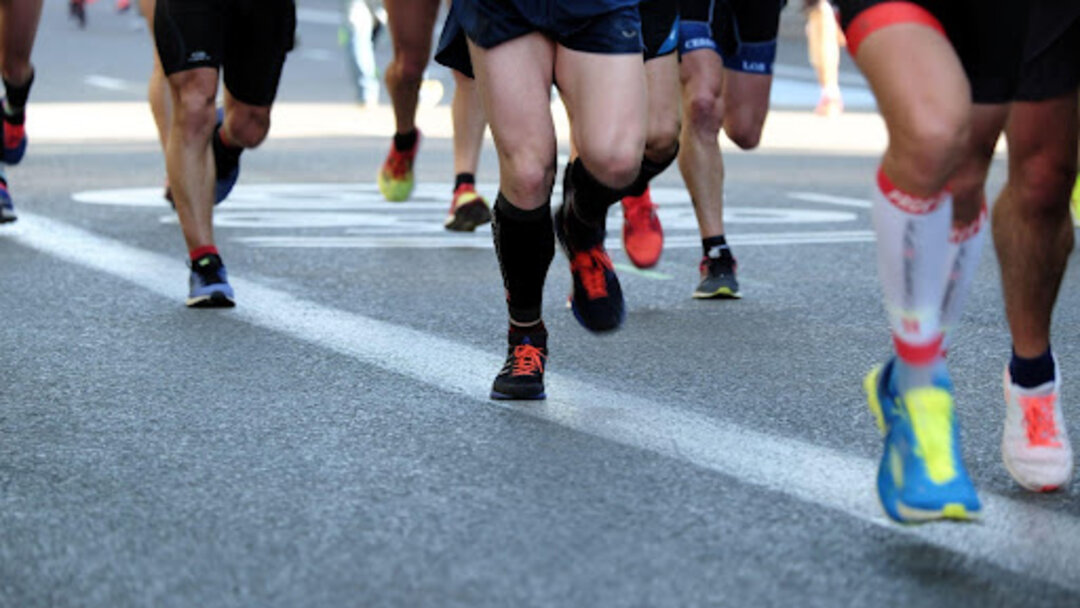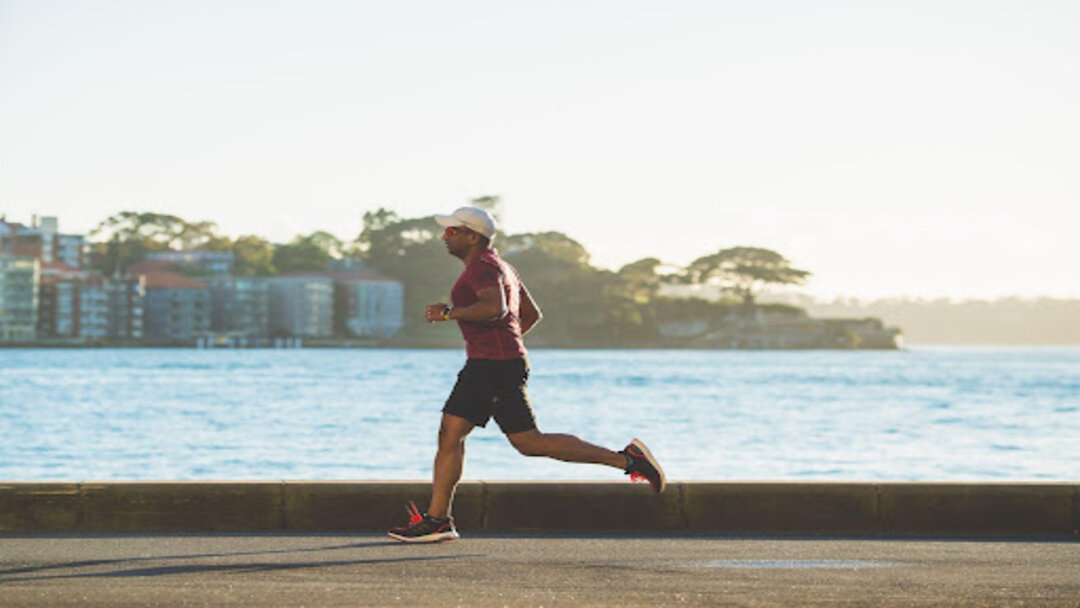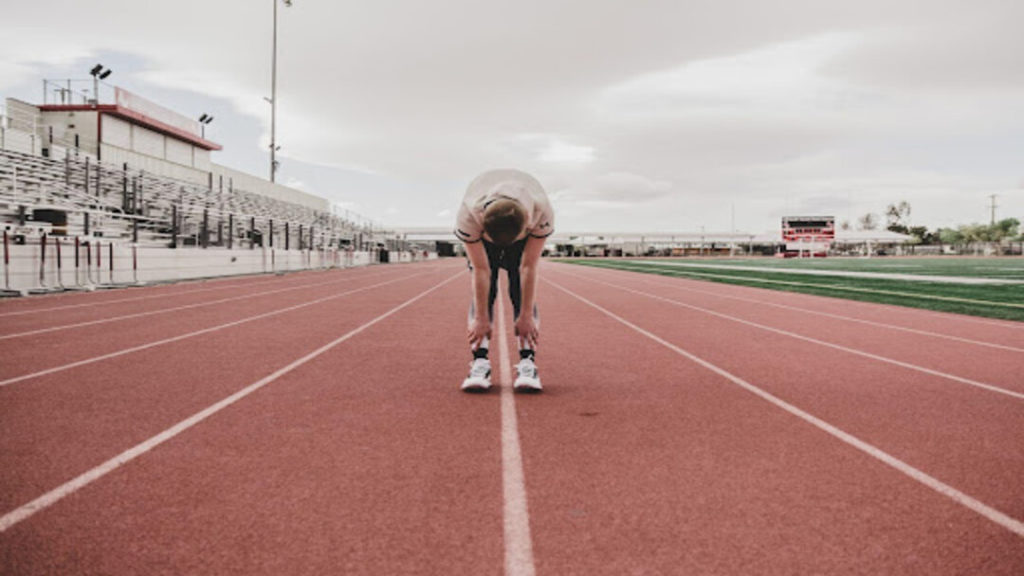Besides chewing gum tossed on the ground, avid runners are also often bothered by runner’s knee or a consistent, dull pain around the kneecap due to an inflammation of cartilage.
Also referred to as patellofemoral pain syndrome, runner’s knee is one of the most common running-related injuries.
Depending on the cause and how well symptoms are cared for, pain from runner’s knee can last from a few weeks to a few years!
If you’re like most people, heavy painkillers and costly surgeries aren’t at the top of the list for fixing runner’s knee.
Luckily, there are many cost-effective and at-home alternatives to ease your pain and help you heal faster!
Keep reading to learn more about how you can heal your runner’s knee!
Related: Legs Sore After Squats & Leg Day? Here’s How To Recover Fast
How to Identify Runner’s Knee
Pain around the kneecap is the most prevalent indicator and symptom of runner’s knee. Many people experience this pain when walking, running, squatting, bending over, going up or downstairs, kneeling, and even sitting for extended periods.
There are several causes and risk factors for runner’s knee that you can look out for.
Abnormal Biomechanics
Poor alignment of a person’s kneecap, or patella, can directly increase their chances of developing runner’s knee. Generally, the patella is a small, floating bone that moves up and down as one straightens and bends their knee.
However, when the patella is out of alignment, it can create friction with adjacent cartilage resulting in inflammation and causing the dull pain that is associated with runner’s knee.
There are a variety of causes for poor alignment in a person’s kneecaps, including flat feet, high arches, knocked knees, and hyperextended knees.
Weak Muscle
The different joints, bones, and muscles that makeup one’s leg work together to make you move. Like a domino effect, if one part of the lower leg is damaged, there is a chain reaction to other areas further up the leg, like the knees.
The knees sit in the middle, between your hips and your ankles. In this way, your knee joints can be directly affected if your hips or ankles have muscle weakness or a muscle imbalance, two common causes of runner’s knee.
Overuse
This one might be self-explanatory, but excessive use of one’s knee can result in joint pain. Overtraining wears down tissue and demands rest to recover back to a normal state.
If you’re a big fan of running, there’s a chance it could be because of your ‘runner’s high,’ which refers to an intensely relaxing state of euphoria experienced after a running session. For this reason, it can be very challenging for people to cut back on their training because of the benefit of feeling happier and less stressed.
A lack of rest days between workouts is a sure-fire way to develop runner’s knee because of how much you’re overusing the joints and muscles in your legs.
History of Injury or Trauma
A previous history of damage to one’s kneecap can increase your chances of developing runner’s knee.
Direct trauma or disruption in the movement of the patella agitates the knee. It results in inflammation of the soft tissues or lining of the knee, leading to patellofemoral pain syndrome.
Lack of Stretching & Warming Up
Regardless of whether you’ve ever played a sport, you’ve heard about the need for a proper warm-up before exercising.
Despite the unquestionable need to warm up and stretch beforehand, many people rush through this process and jump straight into intense exercises.
Since tiny fibers with elastic properties make up muscles, stretching and warming up are imperative to protect them. Forgoing this process will most certainly lead to muscle strains and tears.
Similarly, it is because of this lack of stretching and warming up the hamstrings, hips, and feet that many people can develop runner’s knee.
Looking for a fast and convenient remedy for your muscle aches and pains? Check out Herbal Ice and their game-changing products!
4 Ways To Prevent Runner’s Knee

In today’s world, the average person spends more time zoned into technology than they do exercising! Unfortunately, this can lead to weaker and tighter muscles. It’s more important now than ever for people to take precautions in preventing injuries like runner’s knee.
Today we’ll share four major ways that you can prevent runner’s knee and a variety of other ailments!
Good Running Shoes
To many people’s surprise, running shoes can make or break your running ability.
First of all, having supportive shoes encourages a correct running form, which is essential in preserving your knees and other parts of your body. Secondly, running shoes with a proper cushion protect your body from harsh impact, allowing the force from the ground to travel correctly up the legs, hips, and back.
In this way, you can prioritize good running shoes by replacing your old pairs every once in a while when you start to notice a lack of support.
Feel free to take this as a sign to buy some new shoes!
Warming Up Beforehand
As previously mentioned, the importance of warming up your body before exercising cannot be understated!
Imagine trying to arm wrestle as soon as you wake up from a long night’s sleep. Your arm would be pounded into the table, and you would also probably pull something in your wrist or back.
Stretching and moving your body before exercising allows your muscles to warm up so that they’re ready to be used. This way, you can enjoy your workout more while averting the chance of injuring yourself.
Proper Form
Relating to biomechanics, everyone’s muscles and bones grow and change as we age. Depending on our lifestyle, these growth changes can influence how we run, walk, sit, and more.
Having the correct running form is essential for preventing the development of misalignments in the hips and legs that could otherwise trigger runner’s knee.
If you’re experiencing pain and you’re unsure about your running form, ask friends if they notice any abnormal tendencies, or even better, consult a physiotherapist to be sure.
Progressive Changes in Exercise
Patience is a virtue, and it’s crucial when exercising your body. Many people want to progress from one goal to the next overnight, which can often lead to various self-inflicted injuries.
Planning out your exercise journey with rest days will create a gradual progression in your training instead of the dangerous alternative of rushing through the process and overtraining. In the long run, you’re progressing faster with a gradual exercise plan than if you sped through it and hurt yourself since an injury like runner’s knee can set you back for months.
Related: Can’t Straighten Your Arms After A Workout? Here’s What To Do!
How To Treat Runner’s Knee

The arduous symptoms from runner’s knee can last for weeks or more! Instead of suffering through the pain, here are the top ways you can help your body heal faster while substantially easing your pain.
Rest
A little R&R may be somewhat of a no-brainer, but it’s worth hammering home. Refraining from exercise and resting is one of the best things you can do to speed up the healing process for runner’s knee. Generally, a period of 4-6 weeks of resting is required for holistic healing.
Rest also allows for proper reflection about what exactly caused the injury in the first place so that you don’t repeat it in the future.
Ice & Elevation
The pain from runner’s knee is primarily associated with inflammation and swelling around the patella. To target this inflammation and further the healing process, elevate and ice your leg as much as possible.
As the swelling subsides, the ice also significantly minimizes the pain. Similarly, elevating the leg by placing a pillow underneath or the like further reduces swelling and inflammation.
CBD
The use of CBD in modern society has skyrocketed in recent years! With its anti-inflammatory properties, it’s no surprise that the naturally occurring compound has potent healing effects for muscle and joint pains, including runner’s knee.
Unknown to some people, CBD derives from the hemp plant. Along with reducing pain and inflammation, hemp can also aid with skin conditions and even help with sleep!
To see fast results from runner’s knee and other injuries, check out Dr. Burton’s Hemp Muscle Rub– a hidden gem for those with muscle pains. By combining Chinese herbs and menthol, Hemp Muscle Rub provides a cooling sensation while instantly delivering effective pain relief!
Targeted Stretching
Since pain and swelling from runner’s knee can be rooted back to tissues in the knee that are too tight, stretching can help loosen those muscles and speed up the healing process.
Here is a comprehensive list of the best stretches for runner’s knee:
- Quadriceps Stretch
- Calf Stretch
- Hamstring Stretch
- Illiotibial Band Foam Roll (requires a foam roller)
Strength Exercises
Like the targeted stretching, strength exercises target specific areas to build resistance and strength. There are even particular exercises you can do for runner’s knee to strengthen knee muscles and improve running biomechanics to help prevent future injury.
Here’s a list of strength exercises for runner’s knee:
- Squats
- Feet Arch Lifts
- Clamshell
Taping
Athletic tape is a popular option for treating runner’s knee. Taping often involves two types of tape: Leukotape and KT Tape.
In this case, taping works to pull the skin around the knee into proper alignment and support the kneecap tendons. Generally, athletic tape is a comfortable way to treat runner’s knee every hour of every day– even sticking through showers and sweating!
Wanting to relieve muscle pains fast and cost-effectively? Check out Herbal Ice’s new secret weapon, Hemp Muscle Rub, for immediate results!
Ready. Get Set. Go!
Now that we’ve covered everything you need to know about runner’s knee and how to fix it, you can get back on the road in no time!
Never again will you have to suffer from the chronic pain of runner’s knee since you have all the tools to prevent and treat it! From strength exercises to hemp products, you can rest easy knowing you don’t have to depend on strong painkillers or expensive surgeries.
Take these tips and tricks with you on your next workout to be prepared for whatever life throws at you!
